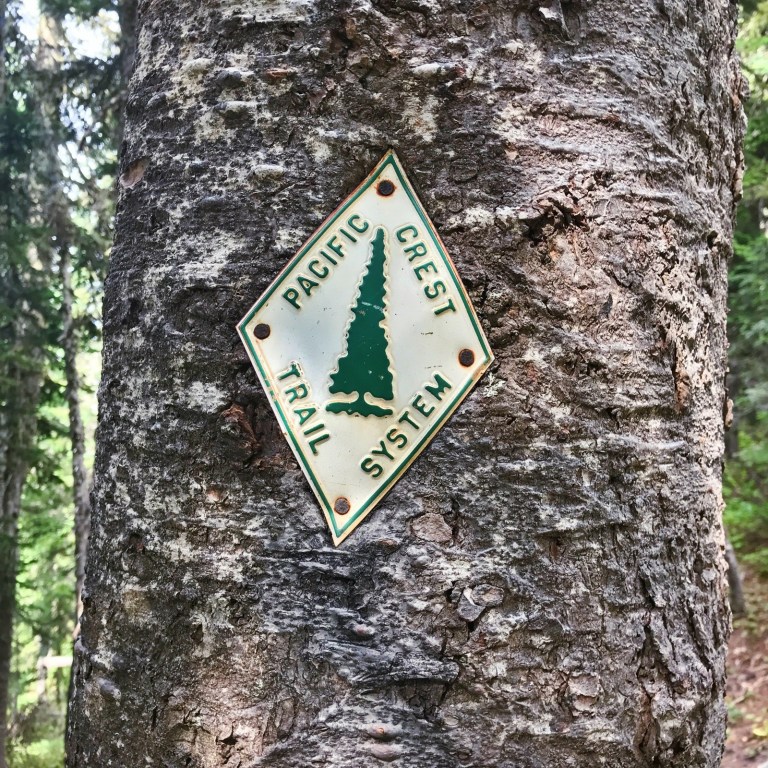
I remember the first time I heard thru-hiking terms. I had just started planning my own thru-hike along the Pacific Crest Trail (PCT) and was sitting in the audience, waiting to listen to a thru-hiker talk about how she hiked the PCT. A few moments before the event was set to start, I introduced myself to the girl sitting next to me. Turns out the girl sitting next to me had just section hiked the Washington portion of the PCT over the summer. I was so excited to meet another female PCT hiker. She first introduced herself to me by her trail name, but after seeing the puzzled look on my face, she quickly introduced herself with her “off trail” name.
After exchanging our names and where we were from, my new friend started me asking questions about my upcoming hike. Was I traveling NoBo or SoBo? Did I have a start date? Did I know what my base weight was? Had I thought about my resupply strategy? I was floored. She might as well have been speaking Chinese to me because I had no idea what she was talking about. I figured out what a start date was, but I told her I didn’t have one yet. NoBo? SoBo? Base weight? Resupply? I felt like a goob. I was honest and told her I had no idea what she was asking me. The whole reason why I was at the event was because I wanted to learn more about how to plan my own thru-hike. Through a lot of research, reading blog posts and articles written by other thru-hikers, talking to other thru-hikers and eventually hiking the PCT myself, I eventually became very well-versed in hiker lingo.
Whether you’re getting ready to start planning your own thru-hike or are just curious and want to learn more about the Pacific Crest Trail and/or long-distance hiking in general, here’s a list of 50 thru-hiking terms you should know. If you ever find yourself in a conversation with a thru-hiker or are listening to a hiker talk about their long-distance hike, being familiar with these terms will help you understand what the hell they’re talking about.
AT (Appalachian Trail): Short for Appalachian Trail or Appalachian National Scenic Trail. The Appalachian Trail is a long-distance hiking trail, extending over 2,200 miles in the Eastern United States, stretching across 14 states from Springer Mountain in Georgia to Mount Katahdin in Maine.
BASE WEIGHT: The total weight of a hiker’s pack and gear, not including food, water and fuel. This also includes the weight of the empty pack.
BLAZE: Used to mark a trail when it becomes hard to follow, makes an abrupt turn or comes to a junction with another trail. These are typically painted or nailed to a tree and located near eye level. Some areas use color-coded blazes to help hikers figure out which trail they’re on.
BOUNCE BOX: A way for a hiker to take certain items along on an extended backpacking trip or thru-hike without having to carry them on their back. A bounce box usually consists of a single box containing extra gear, equipment, food, luxury items, medications or any other supplies. A hiker would pick up the box in town, take things out of it or adds things to it and then “bounce” it forward to the next town.
CAMEL UP: The act of drinking a lot of water at once to quickly hydrate and avoid carrying it. For example, when a hiker reaches a water source, they would use a water filter, like the Sawyer Squeeze, to filter water and then drink it as quickly as they can before getting back on trail again. This technique is commonly used by ultralight hikers as a way for the body to stay hydrated without having to carry heavy water bottles or hydration reservoirs.
CAT HOLE: A hole in the ground dug for human waste in the backcountry. Please note, in alpine areas, deserts, snowfields and other areas, cat holes may be forbidden and hikers required to pack out human waste in a plastic bag instead. When allowed, cat holes should be located at least 200 feet (about 70 adult steps) away from water, trails and camp, 6-8 inches deep and within 4-6 inches of diameter. Always pack out toilet paper, baby wipes and feminine hygiene products. Don’t bury them. Cat holes should be covered and disguised with natural materials when finished.
CDT (Continental Divide Trail): Short for Continental Divide Trail or Continental Divide National Scenic Trail. The Continental Divide Trail is a long-distance hiking trail, extending over 3,100 miles between Mexico and Canada. The CDT stretches across five states: New Mexico, Colorado, Wyoming, Idaho and Montana.
COWBOY CAMPING: The act of camping underneath the stars without a tent or shelter.
DAY HIKER: A person who is only hiking on trail for the day. Can be easily recognized by their strong scents of shampoo, deodorant, lotions and/or perfume.
DRY CAMP: The act of camping without a water source nearby
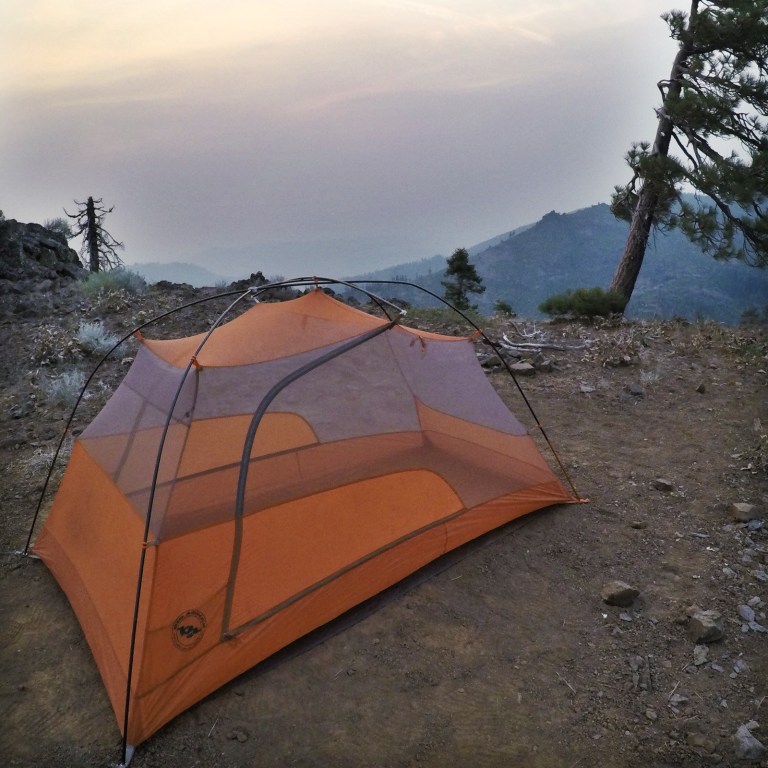
FLIP FLOP: To thru-hike a long-distance trail, but in a non-contiguous manner
FLIP FLOPPER: Someone who thru-hikes a long-distance trail, but in a non-contiguous manner
GLISSADE: When translated from French into English, glissade means to slide. Glissading is the act of sliding down a snow or ice-covered hill, providing a shortcut down the trail. It’s kind of like sledding, but instead of being on a sled, you’re either on your feet or your butt.
GPS (Global Positioning System): Helps calculate a hiker’s exact location through the use of a satellite-based navigation system made up of 33 satellites put into orbit by the US military. GPS works in any weather conditions, anywhere in the world, 24 hours a day, with no subscription fees or setup charges.
HIKER BOX: Boxes found in towns along a long-distance hiking trail (usually at a post office, motel, restaurant, outfitter or trail angel house) that contain food, gear and any other items left behind by hikers in hopes that another future hiker will use it
HIKER HUNGER: The act of always being hungry all the time, no matter how much food a hiker eats throughout the day. This is generally due to consuming less calories than the body can burn, caused by repeated days of hiking and a limited food supply.
HIKER MIDNIGHT: Typically, 9pm or whenever it’s dark outside.
HIKER TRASH: A term sometimes directed as an insult, but is usually taken as a compliment. Hiker trash is used to describe thru-hikers affectionately who have abandoned certain social norms and expectations, such as taking a shower, wearing deodorant, shaving and cleaning their clothes, causing them to become disheveled in appearance. Thru-hikers often closely resemble vagrants or homeless people at town stops along a long-distance hike and are frequently looking for a ride to/from town, beer, WIFI and electrical outlets.
HYOH (Hike Your Own Hike): Short for Hike Your Own Hike. Similarly, along the lines of “to each his own” and “stay out of my business”, the idea of HYOH is that there’s no one right way to hike a trail in regards to gear selection, food preferences, daily mileage, town stops or side trips. It’s a hiker’s prerogative to hike their hike how they want to, regardless of anyone else’s opinion. On the flip side, this motto has been abused by those who choose to disrespect the trail and have bad manners either in town or at a trail angel’s house. HYOH is an idea, not an excuse.
JMT (John Muir Trail): Short for John Muir Trail. The John Muir Trail is a long-distance hiking trail located in California, in the Sierra Nevada mountain range. The JMT extends over 210 miles, traversing through Yosemite, Kings Canyon and Sequoia National Parks and shares 160 miles with the Pacific Crest Trail.
JMTer: A name for a thru-hiker of the John Muir Trail in either direction. JMTers can be recognized by their rather large and clean pack, their use of orange Home Depot buckets for resupply packages, making donations of food to PCTers because they’ve overpacked food and hanging clothing to dry at camp.
LNT (LEAVE NO TRACE): The idea is simple – leave the places you enjoy as good or better than you found them. The LNT concept is built on 7 principles that are designed to help backpackers and hikers think about ways to minimize the impact that their presence has on the natural environment and should always be a part of any outdoor experience. The 7 principles are: (1) Plan ahead and prepare, (2) travel and camp on durable surfaces, (3) dispose of waste properly, (4) leave what you find, (5) minimize campfire impacts, (6) respect wildlife, and (7) be considerate of other visitors.
NERO: Short for “Nearly Zero.” A partial day off or low mileage day. A day where few miles are hiked during a long-distance hike.
NOBO: Short for “northbound.” A northbound thru-hiker starting at the southern terminus of a long-distance trail and heading north. On the PCT, from Mexico to Canada or on the AT, from Georgia to Maine.
PCT (Pacific Crest Trail): Short for Pacific Crest Trail or Pacific Crest National Scenic Trail. The Pacific Crest Trail is a long-distance hiking and equestrian trail, extending over 2,650 miles in the Western United States, stretching across three states, California, Oregon and Washington, from the Mexican border in Campo, California to the Washington/Canadian border.
PCTer: A name for a thru-hiker of the Pacific Crest Trail in either direction. PCTers can be recognized by their smaller, compact and filthy packs as compared to JMTers or section hikers along the trail, their use of Priority Mail Flat Rate boxes for resupply packages, often shopping for food and gear in hiker boxes in towns along the PCT and no matter how often they eat are always hungry at any given time of day.
POSTHOLE: When traveling over snow, a hiker can take a step and sink deep down into the snow, creating big holes, known as postholes. Postholing is extremely tiring and slow-going.
POTABLE WATER: Drinking water, also known as potable water, is water that is safe to drink or to use for food preparation. Potable water does not require filtering.
PRIVY: Either an outhouse or a compostable toilet hole at a backcountry campsite
PUFFY: Another name for a down jacket
PURIST: A term that is often used condescendingly. A purist is a hiker who believes every mile of the official trail should be hiked in order for it to be considered a thru-hike. With annual fire closures, reroutes along the PCT and snowfall throughout the Sierra each year, it’s nearly impossible for any one person to hike all 2,650 miles of the official trail.
REGISTER: A logbook, piece of paper, bed sheet or otherwise inscribe-able object used for documenting a hiker passing of a point on trail. Usually kept at a trailhead, campsite, shelter, trail angel’s house, water cache, hostel, motel, hardware store, restaurant or visitor center along a long-distance hiking trail.
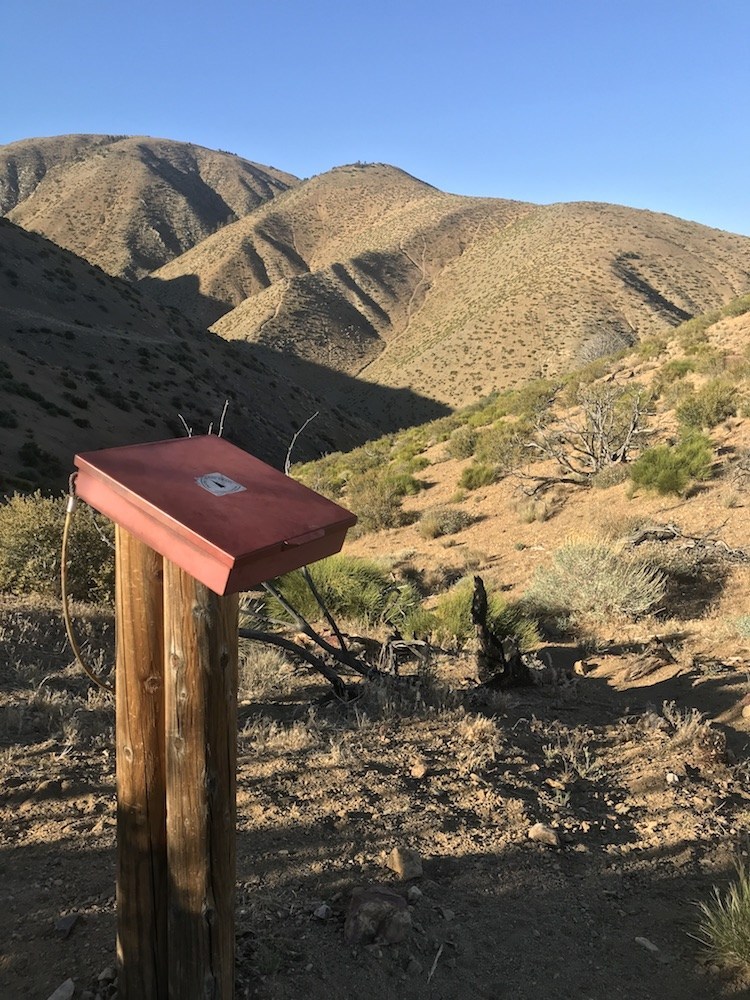
SECTION HIKER: Someone who hikes a long-distance trail in sections over a long period of time rather than completing a continuous thru-hike in one year
SKIPPING: When a thru-hiker misses a section of trail without the intention of flip-flopping
SLACK PACKING: When a thru-hiker hikes with only what they need for that day and leaves everything else behind, usually their shelter and extra food at wherever they plan on staying that night. For example, many PCT thru-hikers will set up camp near Guitar Lake or Crabtree Meadow Ranger’s Station, leave a majority of their gear at the tent site and slack pack up to summit Mount Whitney before coming down to camp for the evening.
SOBO: Short for “southbound.” A southbound thru-hiker starting at the northern terminus of a long-distance trail and heading south. On the PCT, from Canada to Mexico on the AT, from Maine to Georgia.
TEN ESSENTIALS: Survival items recommended by The Mountaineers for safe travel while traveling in the backcountry. They are designed to give hikers/backpackers the tools to respond positively to an accident or emergency as well as enable a hiker/backpacker to safely spend the night (or multiple nights) outside if needed. The Ten Essentials include the following systems: (1) Navigation, (2) Sun Protection, (3) Insulation/Extra Clothing, (4) Illumination, (5) First-Aid Kit, (6) Fire, (7) Repair Kit and Tools, (8) Nutrition/Extra Food, (9) Hydration/Extra Water and (10) Emergency Shelter.
“THE TRAIL PROVIDES”: A phrase and belief that when a hiker needs something the most, whether it be an emergency or during a difficult situation, the trail will provide the hiker with whatever it is they need when they need it. It’s the easiest way for hikers to explain why all of the random acts of kindness happen to them on trail.
THRU-HIKER: Someone who completes a long-distance trail, from end-to-end, in one continuous run or within a 12-month time frame.
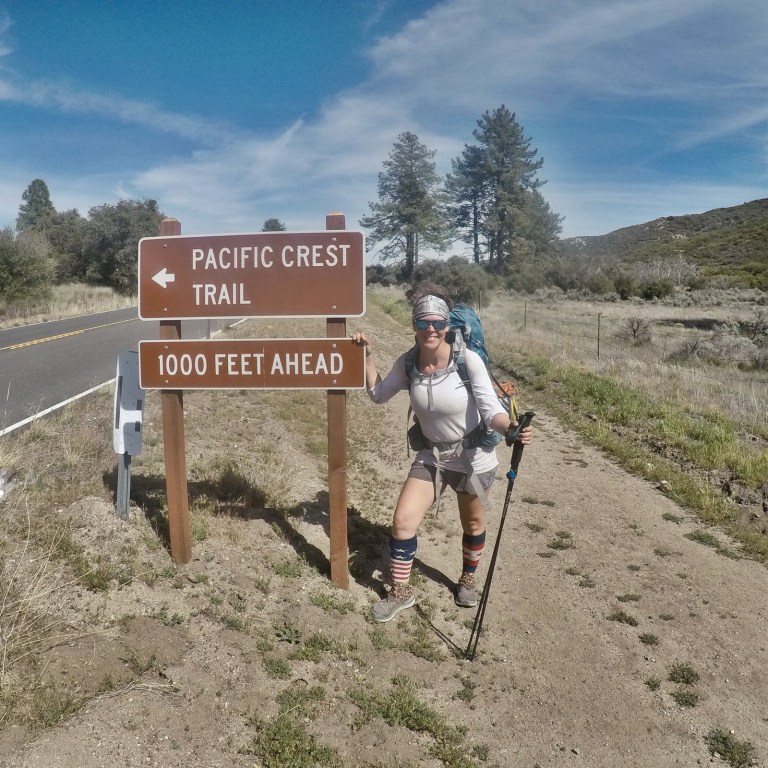
TRAIL ANGELS: Someone who provides trail magic for thru-hikers by offering a place to stay, a ride to/from town, cold drinks, food and/or replenishing water caches on trail. Trail angels provide trail magic for the sake of helping other thru-hikers without expecting anything in return.
TRAIL FAMILY (TRAMILY): The people thru-hikers meet on trail and grow to love like family along their hike. Often these people become lifelong friends long after the long-distance hike has been completed.
TRAIL LEGS: A physical condition the body gets from repeated days of hiking several miles a day for an extended period of time without any major injuries.
TRAIL MAGIC: When a trail angel provides random acts of kindness to thru-hikers in the form of food, water, soda, beer, chairs to sit on, transportation, lodging and gear.
TRAIL NAME: A nickname or alias a thru-hiker earns on trail. A trail name is often given to a hiker by another hiker because of a particularly memorable experience and there’s usually an interesting backstory. Most thru-hikers use a trail name along their long-distance hike.
TRIPLE CROWNER: A thru-hiker who completes hiking all three major USA hiking trails: The Pacific Crest Trail (PCT), The Appalachian Trail (AT), and The Continental Divide Trail (CDT.)
ULTRALIGHT: A minimalist thru-hiker mentality. The goal of being ultralight is to carry a base weight of less than 10 lbs., not including food, water or fuel. The main benefit to being ultralight is to be able to hike faster and farther without getting as tired and with less chance of injury. What ultralighters don’t carry in their pack, they’ll need to have in experience and skill.
VORTEX: A person, place, group of people, town or trail angel’s house that “sucks” thru-hikers off trail and makes it challenging for them to get back on the trail.
WATER CACHE: Another form of trail magic. Water caches are “hidden” stashes of water placed on long-distance trails by trail angles and are sometimes available for thru-hikers to use in areas where there might not be easy access to reliable water sources. Water is generally stored in individual bottles, gallon jugs or water tanks making it easy for hikers to refill their own bottles. Hikers are advised to only fill up what they need to get them to the next reliable water source.
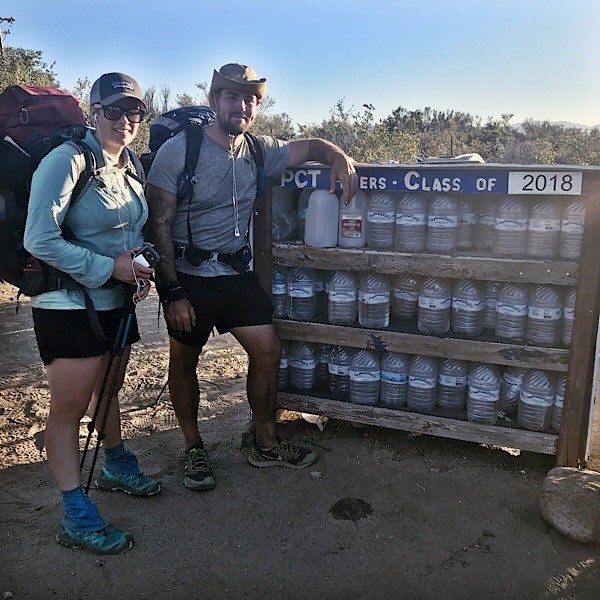
YOGI-ING: When a thru-hiker is able to drop hints, charm, persuade, or otherwise convince strangers and/or day hikers to provide trail magic for them like giving food or drinks or getting a ride into town without directly asking for it. The concept comes from Yogi the Bear who managed to obtain picnic baskets from unsuspecting campers.
ZERO DAY: A day off from thru-hiking. A day where zero miles are hiked during a long-distance hike. Zero Days are typically spent in town resting, recovering from injury or waiting out a storm.

5 Comments on 50 Thru-Hiking Terms Every Hiker Should Know